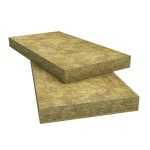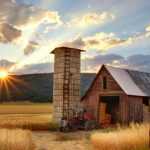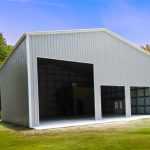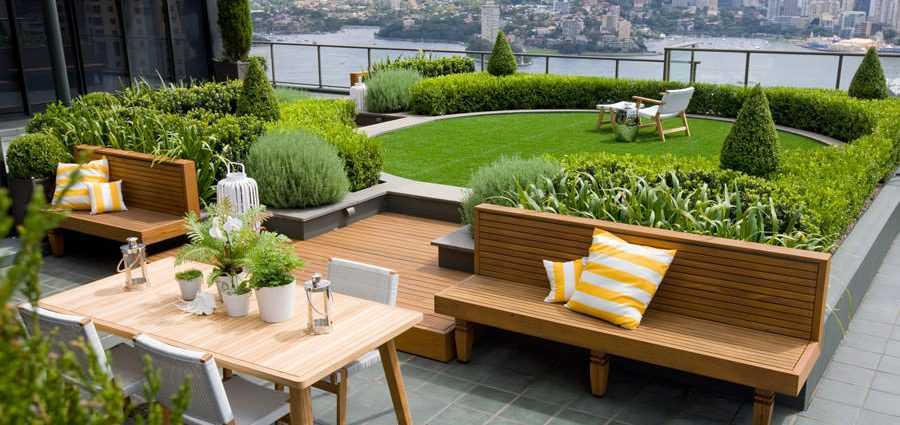For urban inhabitants, Rooftop Gardens are a blessing. If you are living in a flat or house with insufficient space for a yard or garden, a rooftop garden is a lifeguard. It’s a beautiful addition to your townhouse that is environmentally responsible.
If you are enthusiastic about plants and enjoy gardening, you can use the terrace area but do not have enough room in your home. You can thus employ the unused ceiling space and enhance your house.
Gardens on the roof can be used to grow flowers, ornamental trees, and grasses, and even food. For city gardens wanting to expand their space, they are a terrific solution.
Rooftop gardens provide safe play areas, urban eating, individual, social, and ethnic catering facilities, and access to areas of studies for cultivation and other gardening skills. Rooftop gardens also enhance air quality. Birds, birds, and butterflies live in rooftop gardens as do gardens. The grounds keep the house cool during the summer, reducing the heating cost.
You should consult a structural engineer to construct a rooftop garden before beginning to plant. Choose the right plants and decorations to enjoy your restricted area.
How to build a garden roof?
Gardening is a great way to relax. By playing with plants in the light, we may reconnect to nature. We have lost contact with nature in our hectic existence, and gardens can help us reconnect.
There is a good possibility that you will be able to build a roofscape garden if you have a rooftop entrance and a happy homeowner. Even with extra supplies, it should cost only a few hundred dollars and a weekend or four times.
A guided step by step to building a garden in the grounds
Search the architect’s recommendations.
It’s always beneficial to have an expert on your side no matter where you are, technical, psychological, or physical. During the construction of a roof garden, you may not be aware of numerous aspects. Consequently, it is important to get competent counsel before a job starts. You won’t have to use an architect to build a garden, but to analyse if it’s safe to establish a roof garden at home.
Evaluate the rooftop garden viability.
The first step is to find out whether your terrace is suitable for such a project while constructing a garden on your home‘s roof. The answers to the following questions are necessary for you:
- Is your roof big enough for a rooftop garden to accommodate?
- What’s the orientation of your roof?
- Should the wood decking, pavers, rigid isolation, gravel, or grass protect you?
- Will the roof be substituted shortly?
At this time, a consultation by an architect would also be required. An architect will help you to create a garden and determine if a roof garden is built in your home safely.
windbreaks.
The design of rooftop gardens should feature windbreaks as they are larger than traditional gardens. Too large windbreaks are inefficient and can easily be smashed by harsh winds. Windbreak’s mesh or mesh, frame or mesh, meantime, enable the wind to pass through instead of blocking it.
Preparing the soil for a garden on the roof
Most plants can grow on a roof if sufficient soil is provided to establish themselves and thrive. You will find the ground profundity needed in different varieties of trees and wildflowers to create a suitable habitat for plants and trees in your roof garden.
Compost is a significant aspect in assessing your roof garden health in addition to the soil depth. You can produce or buy your own compost in a store. You should, however, produce your own compost if you want to have a big rooftop garden. That’s what we would advise, at least.
Make a weight testing process for Rooftop Garden
Drive a weight-testing technique for your rooftop garden. Determine if the structure of your home can bear the extra weight imposed by your roof garden.
Make all efforts to keep the weight as low as possible. Fiberglass or plastic pots can be used instead of clay. Avoid using pavers when at all possible.
Choose the right plants for your garden on the rooftop.
On the roof, gardening differs from on the ground. Rooftops have a variety of often extreme microclimates. The amount of air and sun your roof receives depends on what grows well in a roof, how many times you need water plants and trees, and whether your plant survives in the winter.
Take these considerations into account while picking a roof garden plant. Keep track of garden upkeep charges as well.
Azure Blute, Sedum Hispanicum, Reflexum, Sedum Misty Butterfly, Camomile, and Blue Haze Arctic Fire are some of the plants which thrive in terrace gardens.
Cover it with a moist blanket once you have added the gravel.
This is where things begin to become a little simpler. Just put your waste bags on top of it now. Scrap the pebbles and roll it with your hands across the root membrane. If you want a thicker layer, add additional gravel.
When the gravel is in place, the damp blanket should be extended. Make sure that 6-8 inches are left in the corners while doing this. Moist blankets can also be produced from old clothes, towels, and bags since they are moist for longer.
Add another layer of pebbles on the top of the soaked blanket. The roof perimeter can be covered with large caverns and gravel. This avoids the entry of plants into your construction and keeps the proper drainage.
Finally, tie the pond liner with flashing tape in the corners of your tower. As a result, the water cannot reach behind the pond liner.
Choose a watering system for your rooftop garden.
This is where you finally decide about your landscape irrigation system. You can water your garden first with buckets, but soon you’ll need to use a more handy and practical way to water the plants.
Rainwater collection devices or autonomous irrigation systems may be used to water. Watering. Collecting rainwater is an excellent approach to ensure sufficient water is provided to the roof garden. In summer, water your garden often to prevent the burning of your plants.
The roof system you choose will decide the materials required to build a garden on the roof. To build your rooftop garden, you will need the following materials:
- Floors and other equipment to fine-tune a dining area, animal attractions, greenhouse, or composter
What plants can you grow in your rooftop garden?
On the roof can be cultivated a delicious garden or attractive flora. You may grow a variety of shrubs, plants, and herbs on your roof garden depending on your budget, weather conditions, space available, and the utility of the structure.
Metal Shed & Space
Include a storage place for gardening equipment, green fertilizers, and other gardening equipment. Consider a bench with integrated steel storage for added convenience. Also, mini storage buildings can be added as additional garden storage
Gardens make any town residence a charming addition. They are great to relax or spend a quiet moment alone after a long day. You can also have a good time in the garden with your friends and family. The terrain exudes a warmth that calms the mind and the soul. They are also environmentally advantageous.
Plan your garden on the roof so you can take advantage of the unused area and build your fantasy garden which complements your property and gives you a calm escape every single time you need.
Add Garden kitchen
For an outdoor kitchen, the basic building blocks are an integrated barbecue and a work surface for preparing your delicious outdoor dishes. However, most outdoor kitchens also have an oven of some sort, perhaps a pizza oven which can be put to multipurpose use. Think about both the surface the kitchen will stand on and the kitchen itself. Add Nice Kitchen Cabinets for a better look. And invest in covers to protect your outdoor kitchen from rain and snow, to help cut down on maintenance.




















